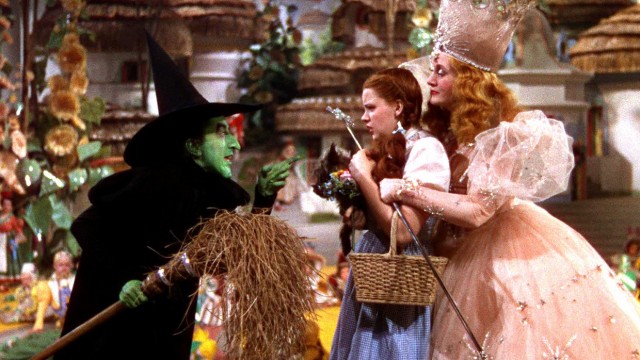A group of us have taken to doing script readings online. Table reads, working as hard as we can to stay ahead of the script enough so that there are no awkward pauses while we figure out who’s going to take the part. This Saturday night saw a group of us doing a read of Book of Shadows: Blair Witch 2. I hadn’t seen it, which is okay; the script apparently deviates in some interesting ways, but neither was very good. Anyway, after the reading, we got to talking about the archetype of the witch.
Of course, the Witch is older than film. So old we don’t know how old she is. She comes with a lot of baggage. Old stories do. The stories change with time and with social development, but their roots run deep. It’s impossible to liberate the old stories from their origins entirely, and it’s certainly true that not all creators try.
The script at least paid lip service to the idea; the character named Heather in the script (I don’t know which character she is in the finished film) is a self-declared Wiccan. She gives one of the little “living in harmony with nature” speeches that can make you feel embarrassed to be a Pagan. I’ve heard it many times before, and I was willing to let that go. But then, as the story progressed, she, too, was willing to slip into “witch” to mean “evil woman.”
At her heart, the Witch is a figure of feminine power; remember that, in Harry Potter, “wizard” is the universal term, but “witch” means “female wizard.” In his last book, Sir Terry Pratchett started exploring the idea that the whole thing might not be so cut-and-dry as all that, but that’s after decades of declaring that Witch=female and Wizard=male. L. Frank Baum? Witches, be they Good or Wicked. If we go back to history, we have the Salem Witch Trials; men and women were tried, convicted, and hanged, but it was women first. Nowhere near as many women were killed as some people will try to convince you, and a heck of a lot more men, but the easiest way to be accused of witchcraft was to be a woman doing what you weren’t expected to.
But, the odd Glinda or Esme Weatherwax or Hermione Granger aside, the Witch is also a symbol of darkness, of—well. Take your adjective. Wicked. Evil. Things like that. She is in the Halloween pantheon along with the Vampire, the Werewolf, the Ghost, what Stephen King calls the Thing With No Name. What’s more, she is one of the few really old yet lingering female archetypes with anything approaching power, and often, her power is rooted in her very femininity. Her evil is rooted in fear of her power.
I don’t think all uses of the Witch are misogynistic, not even all uses of the Wicked Witch. But I think the archetype itself has a fair amount of misogyny behind it. I think it’s rooted in a fear and distrust and, yes, even hatred of women, and I think it’s all too easy for that fear and distrust and hatred to come to the surface when she is used. The word is so old that its etymology is uncertain; conversely, its theoretical equivalent, “warlock,” is only from the sixteenth century. And means, originally, “Oath-breaker.” But witchcraft has been women’s work for over a thousand years.
What makes the Witch wicked, as she usually is? She has failed in some way to be properly feminine. She holds wisdom or magic or just raw power of some sort. She can make you do what you don’t want to do—in the Book of Shadows script, she’s been dead for a long time and still warps Our Ostensible Heroes’ perceptions of reality. In the book of The Wizard of Oz, the Wicked Witch of the West is able to enslave Dorothy, and in the movie, the Good Witch holds knowledge that she keeps from Dorothy to make her tramp all over Oz instead.
Frankly, the Wicked Witch of the West is in many ways driven by sympathetic aims. Her sister has been killed, and her sister’s property has been stolen by the murderer. Put in those terms, her anger is completely reasonable, as is her drive for revenge. Hence Wicked. But the other perspective is engrained so deeply that “wicked” is just part of her name. Which she doesn’t have, in the original. But Glinda does, and Glinda is much closer to our perception of the Fairy Queen. It’s the wicked one who’s the witch as we think of them.

